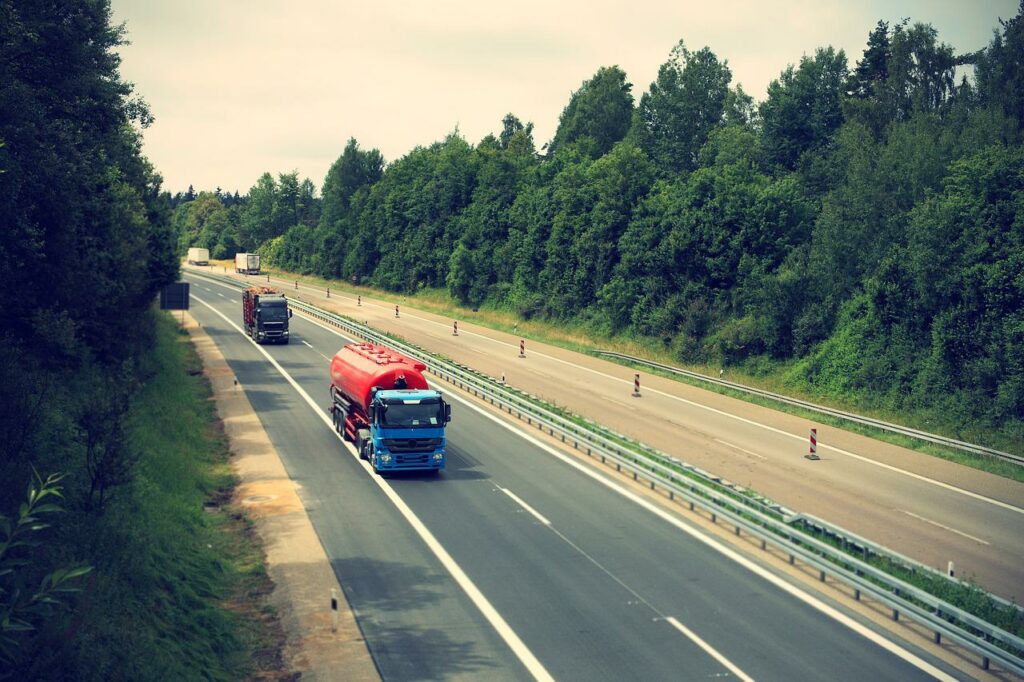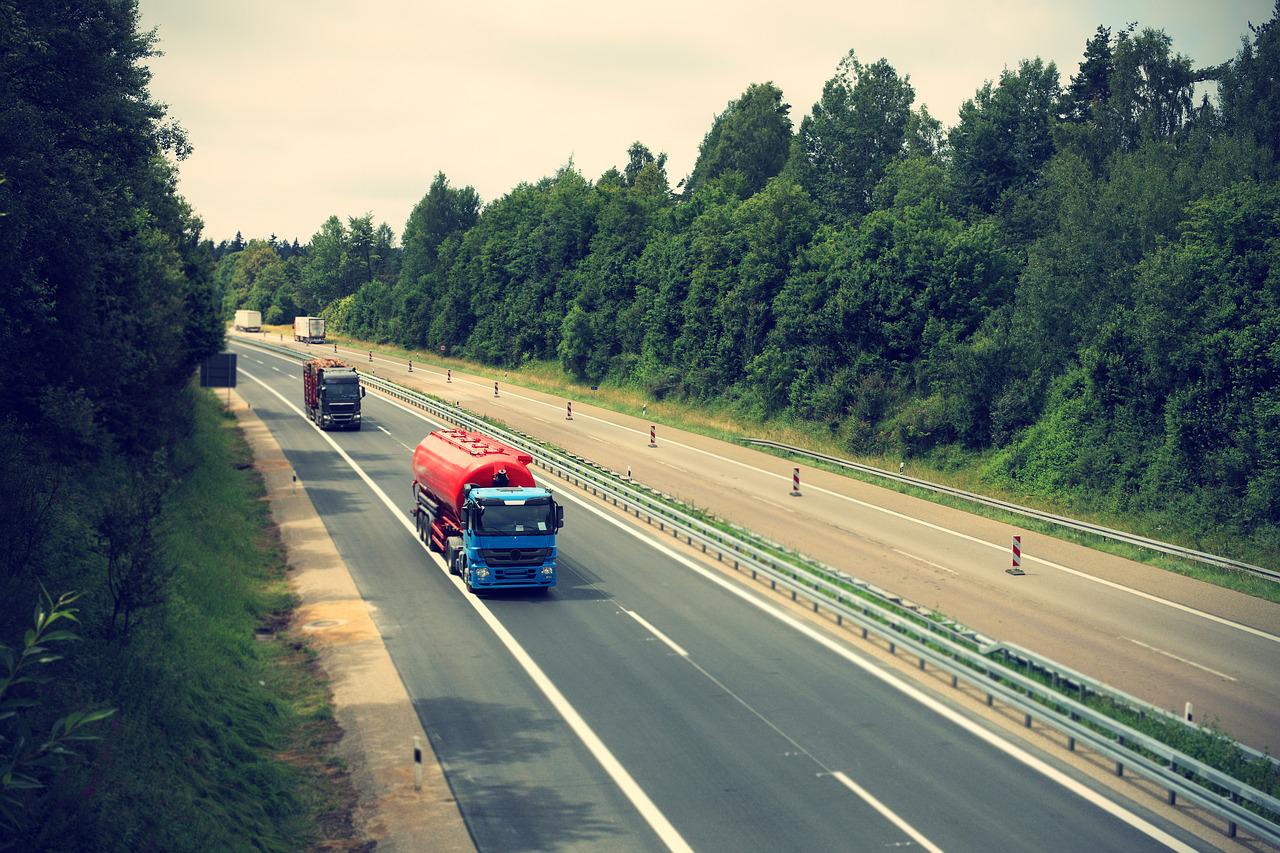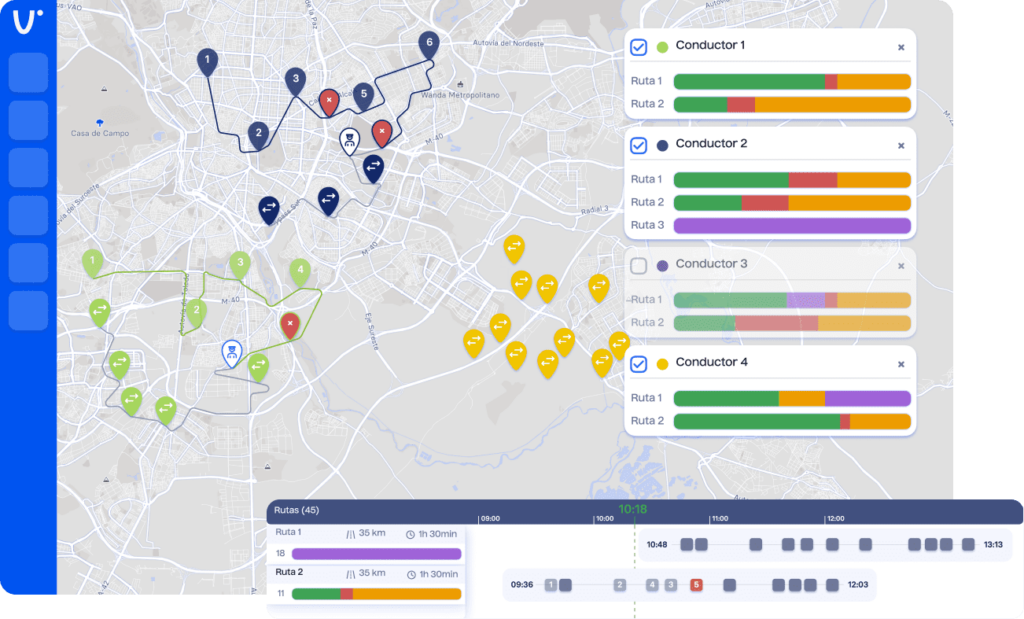Los incidentes forman parte de la realidad a la que se enfrenta cualquier empresa de logística y transporte. Adoptar medidas en favor de la seguridad de las flotas es la manera más efectiva de impedir los perniciosos efectos que tienen sobre las personas y la productividad.
Las largas horas en la carretera nos enfrentan a eventualidades imprevistas que nos perjudican a nivel humano y también económico. Seguir unos sencillos consejos para conductores de vehículos es clave para poder evitarlas. Pero se puede hacer mucho más.
Las ventajas de mejorar la seguridad de la flota
Poner en marcha medidas que disminuyan los riesgos genera innumerables ventajas: satisfacción de los transportistas, incremento de productividad y aumento de la confianza de los clientes. Veamos cómo mejorar la seguridad de las flotas y sus beneficios.
Ayuda a controlar y reducir el exceso de velocidad
El exceso de velocidad sigue siendo, según la DGT, una de las principales conductas de riesgo en la carretera.Formar a los conductores en los peligros asociados y utilizar sistemas que impidan superar los límites de velocidad o que permitan el monitoreo de las flotas facilita cumplir las normas y supone un importante avance hacia la conducción segura.
Apoya una cultura de seguridad y responsabilidad
La seguridad nace en la responsabilidad del conductor. Por eso, ofrecer formaciones que detallen los principales consejos para conductores de vehículos es esencial. Veamos algunos de las recomendaciones que se han de tener siempre en cuenta:
- Facilitar soluciones tecnológicas que monitoricen la conducción. De esta forma, será consciente de sus fallos y podremos formarlo en los aspectos en los que cometa errores repetidos.
- Ofrecer formaciones de conducción avanzada.
- Incluir en los vehículos soluciones de seguridad integral como alertas en tiempo real que señalen problemas en la conducción o indiquen las mejores rutas.
Combate la fatiga del conductor
Entre las recomendaciones de seguridad vial para conductores no podemos obviar el tiempo de descanso. En la UE se exige que los vehículos con más de 9 plazas lleven tacógrafo para controlar el tiempo de descanso.Pero sea cual sea el tipo de vehículo y, según recoge la normativa ministerial, cada cuatro horas y media debe hacer una pausa de al menos 45 minutos. Además, cada día no podrá conducir más de nueve horas.
Obliga a los conductores a ser conscientes
Del cumplimiento de las normas por parte del conjunto de los conductores depende en buena medida mejorar la seguridad de las flotas:
- Debemos llevar un registro personalizado de todos los conductores.
- El monitoreo de las flotas facilita conocer cuándo una conducción no es correcta y formar al empleado sobre buenas prácticas.
- La concienciación es básica para que el empleado entienda cómo mantener medidas de seguridad mejora también la eficacia y ahorra costes.

Garantiza un buen mantenimiento de la flota
Adelantarse a los fallos mecánicos, hacer revisiones periódicas y optimizar los componentes del vehículo es esencial para la seguridad de las flotas. Veamos los pasos principales de mantenimiento:
- Revisión diaria. Implicar a los conductores es esencial. Cada día, antes de comenzar la ruta, es importante que hagan una valoración al detalle de la situación del vehículo.
- Control de las revisiones periódicas. Sustituir los filtros o el aceite, cambiar las pastillas o comprobar el estado de los neumáticos son tareas que se deben realizar por seguridad y también para evitar averías provocadas por un mal cuidado.
- Monitorizar averías de los vehículos. Los softwares de monitorización de vehículos nos permiten acercarnos a KPIs que establezcan los vehículos que sufren más averías y relacionarlos con las rutas, la velocidad media, el tipo de vehículo o la forma de conducción.
- Realizar formaciones que establezcan estrategias de conducción.
Análisis de los errores
Un sistema telemático para la gestión de flotas nos da una información detallada sobre lo que sucede. Con los datos tecnológicos sabremos qué eventos han afectado a la seguridad. Conociéndolos, tendremos en nuestra mano ponerles solución.
Crear un plan de seguridad de la flota
Disponer de una estrategia de seguridad de las flotas nos va a ahorrar contrariedades humanas, productivas y económicas. Una fórmula para controlar todos los aspectos es disponer de una lista con los elementos de seguridad que verificar en las diferentes estructuras del negocio:
Políticas de seguridad
- Entregar al equipo el documento que las recoge.
- Hacer una formación a los empleados.
- Establecer qué personas las actualizan en función de la legislación y las necesidades.
- Detallar la manera en que se vigilará su cumplimiento.
- Nombrar una persona encargada de liderar la seguridad integral y responder las dudas de los trabajadores.
Formación
- Establecer los cursos que se realizarán sobre seguridad y las personas que deberán impartirlos.
- Señalar los canales por los que se informará de cualquier actualización y quiénes las comunicarán.
- Fijar las fórmulas para comprobar que los empleados han entendido y aplican los aprendizajes.
Mantenimiento de la flota
- Generar un documento en el que se indique qué responsabilidades tiene cada persona en relación con el mantenimiento.
- Indicar a quién y dónde acudir cuando se produzcan averías o problemas relacionados con el vehículo.
- Estructurar el plazo de las revisiones periódicas obligatorias.

- Establecer la forma en la que se realizarán los informes de mantenimiento de la flota y qué aspectos deben incluir.
Plataformas de ayuda
- Decidir qué herramientas van a utilizarse para mejorar la seguridad de las flotas.
- Plantear qué presupuesto se va a dedicar a dichas herramientas.
- Hacer una valoración del ahorro de costes y del aumento de productividad que se puede conseguir con ellas.
Conclusión
La seguridad de los conductores y de los vehículos van de la mano de un aumento de la productividad y de la eficiencia de la empresa. Por eso, establecer sistemas de seguridad integral resulta esencial para cualquier compañía logística.
Buena parte de los incidentes se pueden prevenir. Contar con softwares que indiquen errores en la conducción, sensibilizar a los profesionales sobre la importancia de ser estricto en todos los aspectos de seguridad y realizar un mantenimiento exhaustivo son fórmulas ganadoras para mejorar la seguridad de las flotas.



